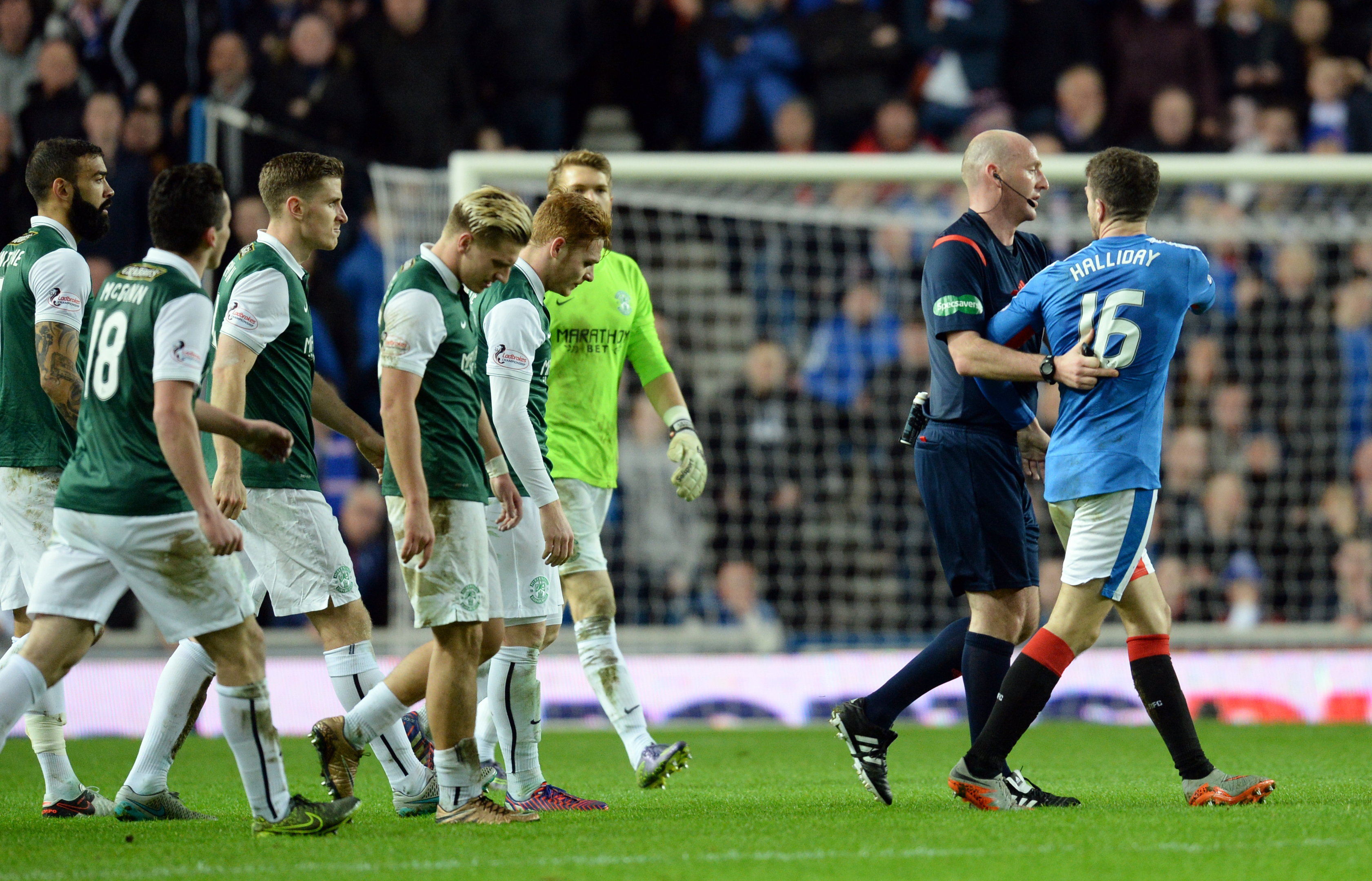
That’s why I’m delighted video replays for referees could be trialled in the Scottish Cup and the FA Cup next season.
If used properly, I reckon real-time video technology could kill off cheating altogether.
And, with the stakes as high as they are for clubs these days, weeding out on-field conmen is something the game needs to take seriously.
We’ve all seen it happen far too many times – a player hits the deck clutching his face after an innocuous coming together, only to miraculously recover once his opponent is sent off.
Rangers and Hibs fans saw it with their own eyes when Andy Halliday clashed with Fraser Fyvie a fortnight ago.
At the time, the referee gave Halliday his marching orders after Fyvie walked away from a second-half midfield tangle clutching his head.
However, TV replays immediately showed the Gers man made zero contact with his opposite number’s napper and his red card was later rescinded.
Fortunately, it didn’t affect the outcome of the game – but it could have done.
The increased use of video technology was first championed by my fellow columnist, Gordon Smith, when he was SFA Chief Executive.
The International Football Association Board now want experiments carried out and will give their final ruling in March.
I’m all for anything that helps referees make the right decision when big, game-changing calls present themselves.
I don’t want refs consulting replays for anything and everything.
Throw-ins, for instance? Not a chance. Niggly fouls in the middle of the pitch? No way.
But for goals, red cards and penalties, the men in the middle should be helped to get it spot-on, even when they don’t spot anything themselves.
What we need is a fifth official in front of a monitor talking into the referee’s ear.
In a split second, he can say: “Hang on a minute, ref. You’ve missed something here.” Or if the referee has doubts himself, he can ask for intervention on his own.
As long as everyone knows in advance when replays can be used and for what reason, it really ought to be simple to implement.
So simple in fact, that I can’t believe it has taken this long for football’s law-making body to talk seriously about checking it out.
Should the International FA Boards (IFAB) rubber stamp FA Cup and Scottish Cup replay trials at their AGM in March, our game will have taken an important stride.
The purists will complain that consulting video will spoil the flow of a match, but I don’t buy that at all.
Once the technology is running smoothly and match officials are comfortable with its use, even the toughest of calls will take seconds to check.
And in the interests of protecting football’s integrity, I believe those few seconds are worth pausing for.
If a player knows in advance he will be caught immediately – and punished harshly – for feigning injury to get an opponent sent off, is he more likely to think twice? I think so.
And when goals, penalties and red-cards are all awarded correctly, matches will more frequently get the outcomes the teams involved deserve, instead of those a few unscrupulous players try to steal.

Enjoy the convenience of having The Sunday Post delivered as a digital ePaper straight to your smartphone, tablet or computer.
Subscribe for only £5.49 a month and enjoy all the benefits of the printed paper as a digital replica.
Subscribe